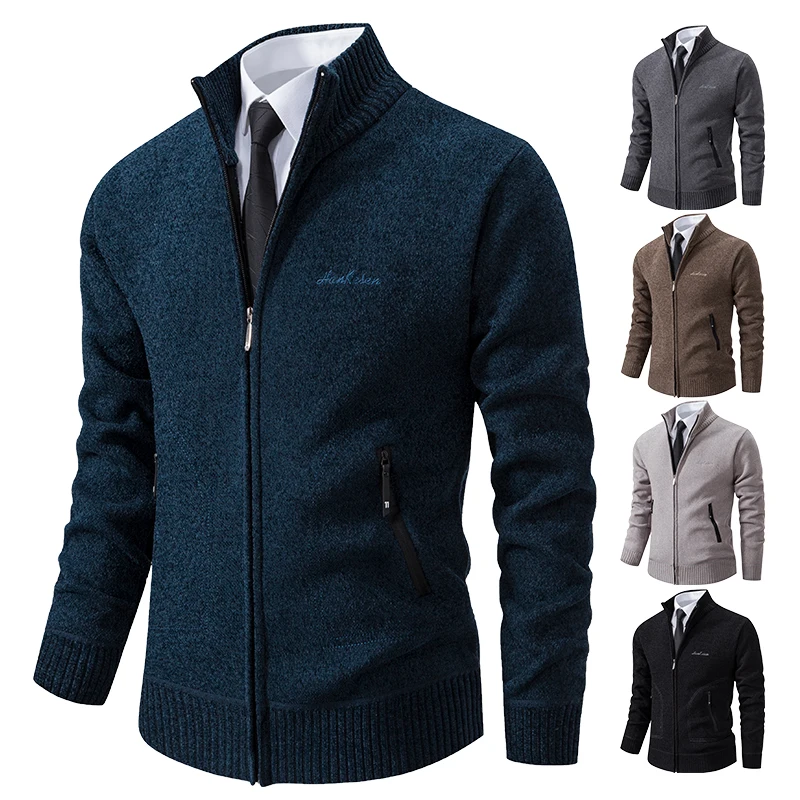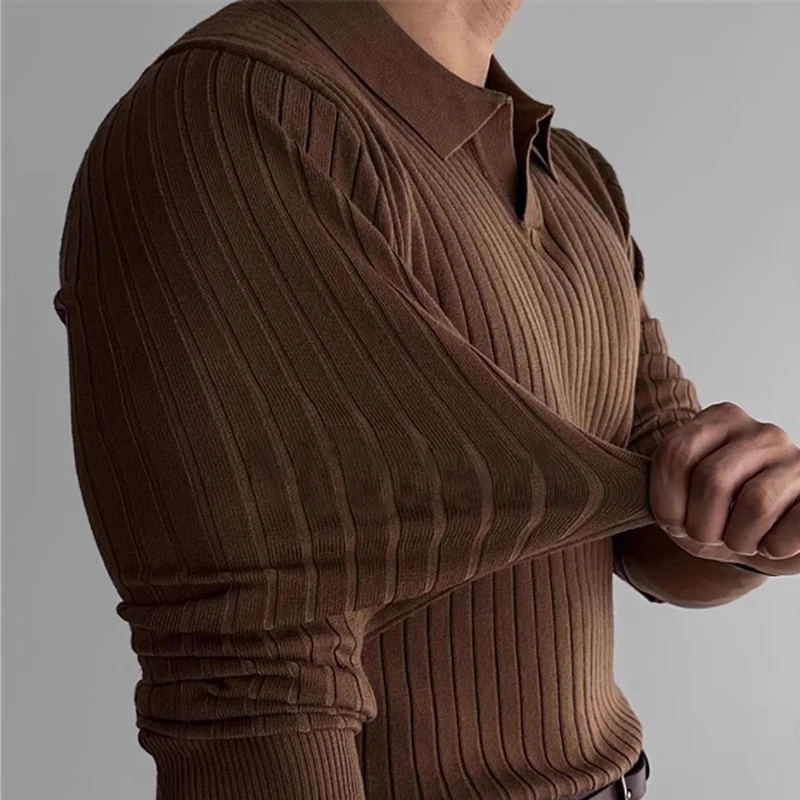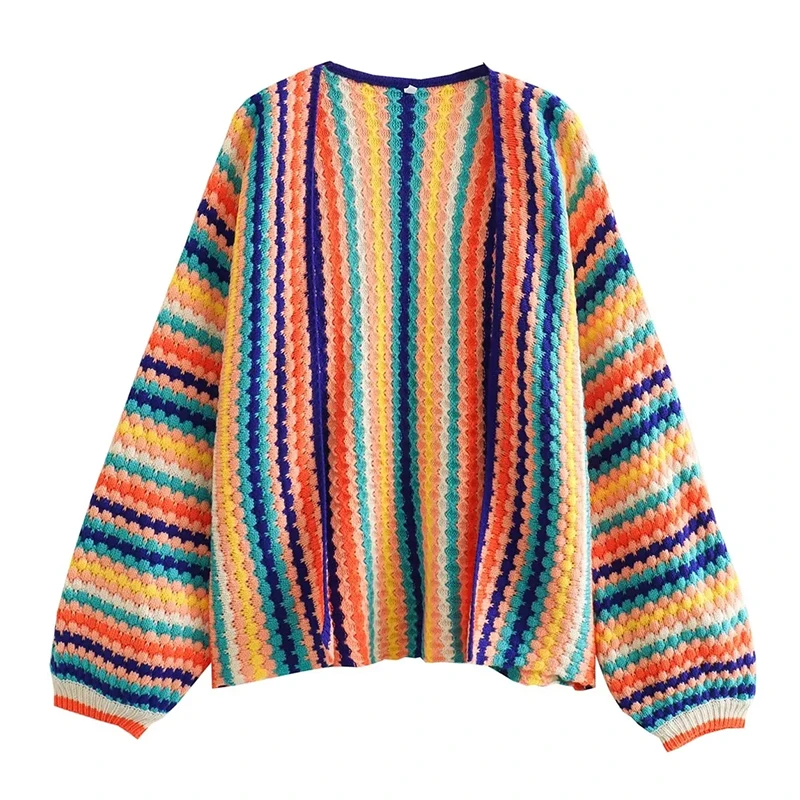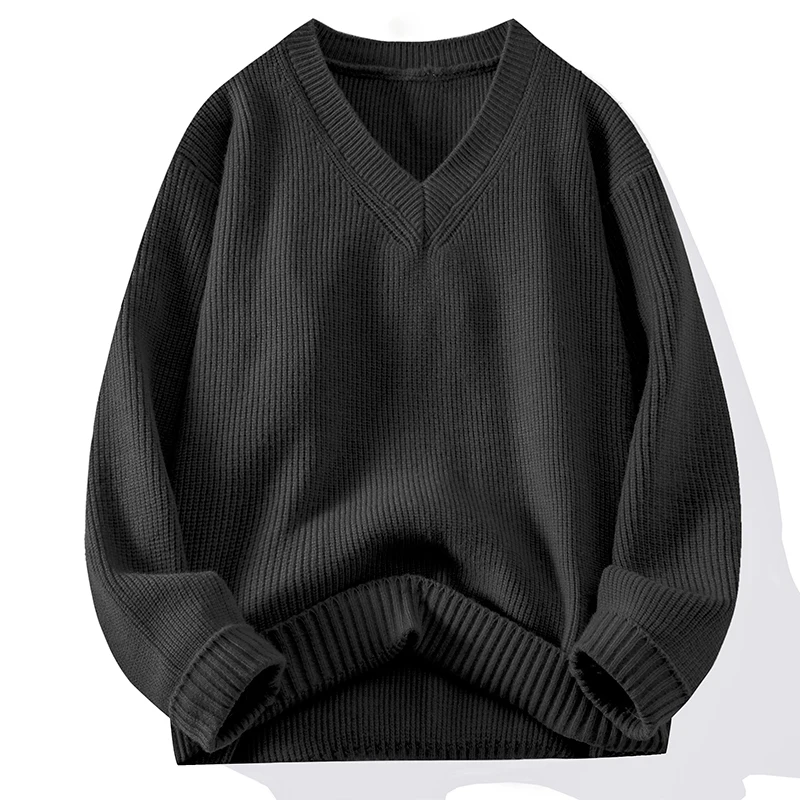Introduction to Cashmere Yarn Weight Systems
Understanding yarn weight classifications is essential for anyone interested in cashmere garments or crafting with this luxurious fiber. Unlike ordinary wool, cashmere has unique properties that influence how its weight is classified and how it performs in finished products.
Cashmere stands apart from other fibers due to its exceptional fineness (typically under 19 microns in diameter), impressive staple length, and remarkable warmth-to-weight ratio. Premium cashmere, like that used by Estate Cloth, features Grade A fibers under 16 microns in thickness, creating an incredibly soft texture while maintaining structural integrity. This exceptional fineness means cashmere can be 3-8 times warmer than regular sheep’s wool despite being significantly lighter.
When discussing cashmere yarn weights, five major classification systems come into play:
- Ply Count: The number of individual strands twisted together
- Metric Count (Nm): A measurement of length per weight unit
- Machine Gauge (GG): Needles per inch in knitting machines
- Standard Yarn Weight System: Categories from 0 (lace) to 7 (jumbo)
- Wraps Per Inch (WPI): A practical measurement method
These classification systems developed over centuries as textile production evolved from hand-spinning to industrial manufacturing. Understanding these cashmere yarn weights from lace to super bulky helps both consumers make informed purchasing decisions and crafters select the ideal yarn for their projects.
Understanding Ply in Cashmere Yarn
Ply refers to the number of individual strands twisted together to create a single yarn. One common misconception is that ply count directly determines yarn thickness—this is only partially true. While ply contributes to thickness, other factors like the thickness of each individual strand also matter significantly.
Common Cashmere Plies
1-ply (single-ply): Creates delicate, soft yarns with a smooth appearance. Often used for lightweight garments but may be more prone to pilling. Single-ply cashmere offers exceptional drape and showcases cashmere’s natural luster.
2-ply: Considered the gold standard for premium cashmere garments, balancing softness with durability. Two strands twisted together provide improved strength without sacrificing the luxurious hand-feel that makes cashmere desirable. Most high-quality cashmere sweaters use 2-ply construction.
3-ply and 4-ply: Offers enhanced durability and structure while still maintaining softness. These constructions create more substantial garments with greater warmth retention and resistance to wear. They’re often used in luxury outerwear or structured knitwear pieces.
Higher plies: Uncommon in pure cashmere due to cost and bulk considerations. When used, they typically appear in specialty items where extreme warmth or texture is desired.
The relationship between cashmere ply and thickness affects several key performance characteristics:
- Warmth Retention: Generally, higher ply counts trap more air between fibers, increasing insulation properties.
- Durability: Multiple plies typically improve resistance to abrasion and extend garment lifespan.
- Drape: Lower ply constructions often create fluid, flowing fabrics, while higher plies produce more structured garments.
- Hand-Feel: The tactile experience varies with ply construction, with each type offering different sensory experiences.
- Cost: Higher ply counts generally require more raw material, increasing production costs.
Understanding the difference between 2-ply vs 4-ply cashmere helps explain why two supposedly identical sweaters might have dramatically different qualities and prices. For example, two different 2-ply cashmere yarns can have vastly different thicknesses if the individual strands differ in diameter—highlighting why ply alone doesn’t tell the complete quality story.
The Metric Count (Nm) System for Luxury Cashmere
The Metric Count (Nm) system represents a precise method for measuring yarn fineness used extensively in commercial cashmere production. This system expresses yarn weight as meters per gram—essentially indicating how many meters of yarn you get per gram of weight.
In Nm notation, you’ll typically see two numbers presented as a fraction, such as “2/28Nm.” Here’s what these numbers mean:
- The first number (2) indicates the ply count
- The second number (28) represents the meters per gram of the single-ply yarn
Higher Nm numbers indicate finer yarns. For example, a 2/60Nm cashmere yarn is significantly finer than a 2/28Nm yarn. This counterintuitive relationship (higher numbers = finer yarn) can confuse newcomers but becomes second nature to industry professionals.
To calculate the final thickness of plied yarn, divide the second number by the first. For our 2/28Nm example:
28 ÷ 2 = 14 meters per gram for the final plied yarn
This system has particular relevance for industrial knitting, where precise yarn specifications ensure consistent manufacturing results. Commercial cashmere producers rely on Nm values to maintain quality standards across production runs.
| Nm Range | Typical Classification | Common Applications |
|---|---|---|
| 2/60Nm+ | Extremely fine | Luxury lightweight accessories, fine gauge knitwear |
| 2/28-2/48Nm | Fine to medium | Premium sweaters, cardigans, versatile knitwear |
| 2/14-2/24Nm | Medium to heavy | Structured garments, winter accessories |
| Below 2/14Nm | Heavy | Chunky knitwear, specialized applications |
Premium cashmere garments typically use yarns in the 2/28Nm to 2/48Nm range, balancing softness, durability, and appropriate drape for everyday luxury wear.

Machine Gauge (GG) in Premium Cashmere Knitwear
Machine gauge, abbreviated as “GG” (gauge), refers to the number of needles per inch in knitting machines. This measurement directly determines how fine or thick the resulting fabric will be. Unlike other classification systems that measure the yarn itself, gauge describes the machinery used and, consequently, the fabric structure produced.
Common Cashmere Knitwear Gauges
12GG and higher (fine gauge): Creates lightweight, refined fabrics with excellent drape. Fine gauge knits showcase cashmere’s natural elegance and are perfect for layering pieces or garments intended for moderate climates. These knits feature smaller, tighter stitches that highlight stitch definition and create smooth surfaces.
7-10GG (mid-gauge): Represents the sweet spot for versatile cashmere knitwear. This range balances warmth with elegance and creates garments suitable for various seasons. Men’s cashmere pullovers often utilize this gauge range to provide comfort without excessive bulk.
3-5GG (heavy gauge): Produces substantial, textured fabrics with pronounced stitches and maximum warmth. These chunky knits create statement pieces with excellent insulation properties, though they use significantly more yarn per garment. Heavy gauge cashmere showcases the fiber’s loft and creates dimensional textures.
The relationship between yarn weight and machine gauge is critical—finer yarns require higher gauge machines, while thicker yarns need lower gauge equipment. Using incompatible combinations can damage machinery or produce substandard fabrics.
| Gauge (GG) | Fabric Appearance | Typical Applications | Recommended Yarn Weights |
|---|---|---|---|
| 12GG+ | Fine, smooth surface | Lightweight sweaters, shells | Lace to Sport |
| 7-10GG | Medium texture, versatile | All-purpose knitwear, cardigans | Sport to DK/Worsted |
| 3-5GG | Chunky, pronounced stitches | Winter sweaters, statement pieces | Worsted to Super Bulky |
Understanding cashmere gauge and knit density helps explain why different garments have distinct appearances and performance characteristics even when made from the same quality cashmere fiber.
Standard Yarn Weight System for Cashmere
The Craft Yarn Council’s Standard Yarn Weight System provides a universally recognized framework for categorizing yarn thickness. This consumer-friendly system uses numbers 0 through 7, each corresponding to familiar names like “Lace,” “Fingering,” or “Bulky.”
While this system applies to all fiber types, cashmere has unique properties that sometimes require slight adjustments to standard expectations. Its exceptional softness, bloom, and thermal properties mean cashmere may perform differently than other fibers of identical weight classifications.
| Weight Category | Name | Common Cashmere Applications | Recommended Needle Size (US) | Typical Gauge (stitches per 4”) |
|---|---|---|---|---|
| 0 | Lace | Delicate scarves, shawls, fine accessories | 000 to 1 (2.25-3.25mm) | 33-40+ |
| 1 | Super Fine/Fingering | Lightweight accessories, luxury socks, fine garments | 1 to 3 (2.25-3.25mm) | 27-32 |
| 2 | Fine/Sport | Versatile accessories, elegant garments | 3 to 5 (3.25-3.75mm) | 23-26 |
| 3 | Light/DK | Premium everyday sweaters, cardigans | 5 to 7 (3.75-4.5mm) | 21-24 |
| 4 | Medium/Worsted | Structured garments, winter accessories | 7 to 9 (4.5-5.5mm) | 16-20 |
| 5 | Bulky | Statement pieces, quick projects | 9 to 11 (5.5-8mm) | 12-15 |
| 6 | Super Bulky | Dramatic accessories, ultra-warm items | 11 to 17 (8-12.75mm) | 7-11 |
| 7 | Jumbo | Art pieces, extreme texture | 17+ (12.75mm+) | 6 and fewer |
A significant difference exists between hand-knitting classifications and commercial production categories. Hand-knitters often follow this standardized system precisely, while commercial manufacturers may use proprietary or more specialized systems like Nm or machine gauge.
Choosing the right cashmere yarn weight involves considering both the technical specifications and the intended use. For example, a Category 3 (DK weight) cashmere creates versatile garments that balance warmth and drape—ideal for everyday luxury pieces.
Wraps Per Inch (WPI): Practical Measurement for Cashmere
Wraps Per Inch (WPI) offers a practical, accessible method for determining yarn thickness without specialized equipment. This hands-on approach proves particularly valuable for identifying unlabeled cashmere yarn or comparing yarns from different manufacturers.
How to Measure WPI
- Find a consistent object with a straight edge (ruler, pencil, or cardboard)
- Wrap the cashmere yarn around the object, ensuring strands lie flat side by side without overlapping or stretching
- Count how many wraps fit within one inch
- Use this number to determine the weight category using the chart below
| WPI Range | Corresponding Weight Category | Common Cashmere Applications |
|---|---|---|
| 30+ | Lace (0) | Delicate accessories, heirloom pieces |
| 20-30 | Fingering/Super Fine (1) | Fine scarves, lightweight garments |
| 16-19 | Sport/Fine (2) | Year-round accessories, elegant tops |
| 12-15 | DK/Light (3) | Versatile sweaters, women’s cashmere pullovers |
| 9-11 | Worsted/Medium (4) | Structured knitwear, winter garments |
| 7-8 | Bulky (5) | Statement pieces, heavy winter wear |
| 5-6 | Super Bulky (6) | Dramatic accessories, extreme warmth |
| Under 5 | Jumbo (7) | Art pieces, specialized applications |
WPI measurements may require slight adjustments for cashmere due to its unique bloom and elasticity. After washing and blocking, cashmere typically “blooms,” expanding slightly and creating a softer fabric. This property means cashmere might behave like a slightly heavier weight yarn after finishing than its initial WPI measurement suggests.
This method has some limitations for very fine cashmere yarns, where distinguishing between 28 and 32 WPI can be challenging without practice. However, it remains valuable for general classification, especially when comparing multiple yarns relative to each other.

Comprehensive Cashmere Yarn Classification Chart
This comprehensive reference chart integrates all major classification systems discussed previously, providing a unified framework specifically tailored for cashmere yarn. Use this chart to translate between different measurement systems and identify optimal applications for each weight category.
| Standard Category | Common Name | Typical Cashmere Ply | Approximate Nm Range | WPI Range | Compatible Machine Gauge | Recommended Needle Size (US) | Ideal Applications |
|---|---|---|---|---|---|---|---|
| 0 | Lace | 1-ply, fine 2-ply | 2/60+ | 30+ | 14GG+ | 000-1 | Delicate scarves, shawls, fine lace |
| 1 | Fingering/Super Fine | 2-ply | 2/40-2/60 | 20-30 | 12-14GG | 1-3 | Lightweight accessories, detailed work |
| 2 | Sport/Fine | 2-ply | 2/30-2/40 | 16-19 | 10-12GG | 3-5 | Versatile accessories, year-round wear |
| 3 | DK/Light | 2-3 ply | 2/20-2/30 | 12-15 | 7-10GG | 5-7 | Premium everyday sweaters, business attire |
| 4 | Worsted/Medium | 3-4 ply | 2/14-2/20 | 9-11 | 5-7GG | 7-9 | Structured garments, winter pieces |
| 5 | Bulky | 4-6 ply | 2/8-2/14 | 7-8 | 3-5GG | 9-11 | Statement knitwear, cold-weather items |
| 6 | Super Bulky | 6+ ply | 2/5-2/8 | 5-6 | 2-3GG | 11-17 | Dramatic accessories, extreme warmth |
| 7 | Jumbo | Multiple strands | Below 2/5 | <5 | Below 2GG | 17+ | Art pieces, specialized applications |
When using this chart, remember that these categories represent general guidelines. Individual yarns may fall between categories or exhibit properties of multiple weight classes depending on fiber preparation, twist level, and finishing. The values provided represent the most common ranges for pure cashmere yarn.
Lace to Sport Weight Cashmere: Characteristics and Uses
The lightest cashmere weight categories create some of the most elegant and versatile luxury items. These finer weights showcase cashmere’s exceptional softness and drape while providing surprising warmth despite their delicate appearance.
Lace Weight (Category 0)
Lace weight cashmere creates ethereal, incredibly delicate fabrics with exceptional drape and surprising warmth despite their whisper-light construction.
- Characteristics: Extremely fine, often single-ply or very fine 2-ply construction; typically in the 2/60Nm+ range
- Applications: Heirloom shawls, delicate scarves, fine layering pieces
- Care Considerations: Requires gentle handling; prone to snagging; best hand-washed
- Drape and Texture: Creates fluid, flowing fabric with exceptional movement
- Typical Construction: Usually single-ply or extremely fine 2-ply
Fingering Weight (Category 1)
This versatile fine-gauge category creates luxurious accessories and garments with excellent stitch definition and durability despite its delicate appearance.
- Characteristics: Fine but stronger than lace weight; typically 2-ply construction in the 2/40-2/60Nm range
- Applications: Lightweight scarves, fine gloves, elegant socks, detailed accessories
- Care Considerations: Still delicate but more resilient than lace weight
- Drape and Texture: Maintains excellent drape while providing more structure
- Typical Construction: Usually 2-ply with moderate twist
Sport Weight (Category 2)
Sport weight cashmere balances detail with substance, creating versatile fabrics suitable for year-round wear in temperate climates.
- Characteristics: Medium-fine weight; typically 2-ply in the 2/30-2/40Nm range
- Applications: Lightweight sweaters, versatile accessories, short sleeve cashmere sweaters
- Care Considerations: More forgiving than finer weights; still benefits from gentle washing
- Drape and Texture: Good balance between flow and structure
- Typical Construction: Typically 2-ply with standard twist
Understanding the differences between lightweight and heavyweight cashmere helps determine which option best suits your climate and wearing preferences. Lighter weights excel in versatility and layering potential, while heavier options provide maximum warmth for colder conditions.
DK to Worsted Weight Cashmere: Characteristics and Uses
Medium-weight cashmere categories represent the most popular and versatile options for everyday luxury garments. These weights balance warmth, durability, and elegance, making them suitable for a wide range of applications.
DK (Double Knitting) Weight (Category 3)
DK weight cashmere creates the perfect balance of warmth, wearability, and elegance—making it the go-to choice for premium everyday knitwear.
- Characteristics: Versatile medium weight; typically 2-3 ply in the 2/20-2/30Nm range
- Applications: Business-appropriate sweaters, year-round cardigans, versatile accessories
- Care Considerations: Relatively durable while maintaining luxurious feel; responds well to proper washing
- Drape and Texture: Excellent balance between structure and flow; creates defined but soft-looking stitches
- Typical Construction: Often 2-ply with moderate to high twist for durability
Worsted Weight (Category 4)
Worsted weight cashmere provides substantial warmth while maintaining elegant drape, creating structured garments with excellent insulation properties.
- Characteristics: Medium-heavy weight; typically 3-4 ply in the 2/14-2/20Nm range
- Applications: Winter sweaters, cashmere turtlenecks, substantial scarves and accessories
- Care Considerations: Durable but may show wear at friction points; benefits from gentle washing
- Drape and Texture: Creates structured fabrics with defined stitches while maintaining soft hand
- Typical Construction: Often 3-4 ply with balanced twist
Medium-weight cashmere categories showcase the fiber’s natural properties particularly well, balancing the softness and warmth that make cashmere desirable with sufficient durability for regular wear. These weights represent the sweet spot for investment pieces that will provide years of comfortable use.
The gauge and weight of cashmere significantly impact a garment’s performance in different environments. Medium weights offer versatility across seasons, particularly in temperature-controlled environments, while providing the luxurious hand-feel and elegant drape that cashmere is known for.
Cashmere Wrap Sweaters, Women's Cashmere Pullovers
$75.89 Select options This product has multiple variants. The options may be chosen on the product pageCashmere Cable Knit Sweaters, Women's Cashmere Pullovers
Price range: $111.82 through $112.93 Select options This product has multiple variants. The options may be chosen on the product pageCropped Cashmere Sweaters, Women's Cashmere Pullovers
$155.77 Select options This product has multiple variants. The options may be chosen on the product pageOversized Cashmere Sweaters, Plus Size Cashmere Sweaters, Women's V-Neck Cashmere Sweaters
$136.87 Select options This product has multiple variants. The options may be chosen on the product page- Price range: $108.11 through $130.03 Select options This product has multiple variants. The options may be chosen on the product page
Striped Cashmere Sweaters, Women's Cashmere Pullovers
$139.68 Select options This product has multiple variants. The options may be chosen on the product page
Bulky and Super Bulky Cashmere: Characteristics and Uses
Heavier cashmere weight categories create dramatic, statement-making pieces with maximum warmth. While less common in pure cashmere due to cost considerations, these weights showcase cashmere’s exceptional insulating properties and create distinctive luxury items.
Bulky Weight (Category 5)
Bulky cashmere creates substantial fabrics with pronounced texture and exceptional warmth, ideal for statement pieces and cold-weather wear.
- Characteristics: Thick, lofty construction; typically 4-6 ply in the 2/8-2/14Nm range
- Applications: Statement sweaters, winter accessories, oversized cashmere sweaters
- Care Considerations: Structure maintenance important; may be prone to pilling without proper care
- Drape and Texture: Creates substantial fabrics with dimensional texture; moderate drape
- Typical Construction: Often multiple plies or loosely spun singles with loft
Super Bulky (Category 6)
Super bulky cashmere provides maximum insulation and dramatic texture, though pure cashmere in this weight is rare and typically reserved for luxury statement pieces.
- Characteristics: Very thick construction; typically 6+ ply or multiple strands in the 2/5-2/8Nm range
- Applications: Dramatic accessories, extreme cold-weather items, luxury home goods
- Care Considerations: Requires careful handling to maintain structure; often dry-clean recommended
- Drape and Texture: Creates highly textural fabrics with limited drape; emphasizes dimensional stitches
- Typical Construction: Multiple plies, novelty constructions, or very lofty spinning
Jumbo (Category 7)
Jumbo weight cashmere represents a specialty category, extremely rare in pure cashmere and typically used only for art pieces or ultra-specialized applications.
- Characteristics: Extremely thick construction; typically multiple strands held together
- Applications: Art pieces, extremely specialized applications
- Care Considerations: Often display-only or special care requirements
- Drape and Texture: Limited drape; maximum texture and dimension
- Typical Construction: Multiple strands, novelty constructions, or specialized spinning techniques
Pure cashmere in heavier weights is less common because:
- The cost becomes prohibitive as yarn consumption increases dramatically
- Cashmere’s natural properties can be overwhelmed by excessive bulk
- The weight-to-warmth ratio advantage becomes less significant
When heavier weights are desired, cashmere is often blended with complementary fibers like merino wool to reduce cost while maintaining warmth and adding structure. These blends can provide much of cashmere’s luxurious feel at more accessible price points, though they lack the full thermal efficiency and softness of pure cashmere.

Factors Influencing Cashmere Yarn Weight Properties
Beyond the basic classification systems, several crucial factors influence how cashmere yarn performs within its weight category. Understanding these factors helps explain why two cashmere yarns of identical weight classification might perform quite differently.
Fiber Quality Impact
Micron Count (Fineness)
The diameter of individual cashmere fibers, measured in microns, significantly affects how a yarn feels and performs regardless of its weight classification. Finer fibers (lower micron count) create softer yarns that can feel lighter than their actual weight category suggests.
- Grade A cashmere (under 16 microns) creates exceptionally soft yarns that drape beautifully
- Higher micron fibers may create yarns that feel heavier or coarser even at identical weight classifications
Staple Length
The length of individual cashmere fibers influences yarn construction and performance. Longer fibers can be spun into stronger, smoother yarns with less twist required, affecting how the final yarn behaves within its weight category.
- Longer fibers (typically 36mm+) create smoother yarns with less pilling tendency
- Shorter fibers may require more twist or different construction techniques to maintain strength
Spinning Method Influence
Worsted vs. Woolen Spinning
The fundamental spinning technique dramatically affects yarn characteristics even when creating identical weight classifications:
- Worsted spinning: Creates smooth, dense yarns with defined stitch patterns and less air trapped within the yarn structure
- Woolen spinning: Creates loftier, airier yarns with excellent thermal properties but less stitch definition
Twist Level and Direction
The amount and direction of twist applied to the yarn impacts its structure, strength, and appearance:
- High-twist yarns: Create more defined stitches and often greater durability but potentially less softness
- Low-twist yarns: Maximize softness and loft but may be more prone to pilling or stretching
Blend Composition Effects
Pure cashmere behaves differently from blended yarns, even when classified in identical weight categories. Common cashmere blends with 70 percent wool and 30 percent cashmere alter several key characteristics:
- Wool adds structure and resilience while reducing cost
- Silk adds strength and luster but changes drape characteristics
- Cotton adds durability and reduced warmth for seasonal versatility
These fiber interactions create complex performance profiles that transcend simple weight classifications. Blends can optimize certain properties while sacrificing others, allowing producers to target specific performance characteristics beyond what pure cashmere might offer alone.

How to Select the Right Cashmere Yarn Weight for Your Project
Choosing the optimal cashmere yarn weight requires balancing several factors to achieve the desired performance, appearance, and comfort in your finished item. Whether you’re purchasing ready-made garments or selecting yarn for crafting, understanding weight implications helps make informed decisions.
Guidelines by Garment Type
- Fine Accessories (scarves, shawls, lightweight gloves):
- Recommended weights: Lace (0) to Sport (2)
Benefits: Maximum softness, elegant drape, comfortable for sensitive skin areas
Everyday Sweaters and Pullovers:
- Recommended weights: DK (3) to Worsted (4)
Benefits: Balanced warmth and wearability, suitable for layering
Winter Outerwear and Statement Pieces:
- Recommended weights: Worsted (4) to Bulky (5)
Benefits: Maximum warmth, substantial feel, distinctive texture
Home Accessories (throws, pillows):
- Recommended weights: DK (3) to Super Bulky (6)
- Benefits: Varies by application—lighter weights for elegant drape, heavier weights for cozy warmth
Climate Considerations
- Warm Climates or Indoor Wear:
- Recommended weights: Lace (0) to Sport (2)
Benefits: Provides cashmere’s luxurious feel without excessive warmth
Temperate Climates or Multi-Season Wear:
- Recommended weights: Sport (2) to DK (3)
Benefits: Versatile performance across seasons
Cold Climates or Winter-Specific Wear:
- Recommended weights: Worsted (4) to Bulky (5)
- Benefits: Maximum thermal efficiency
Selecting the perfect yarn weight for cashmere sweaters involves considering both environmental factors and personal preferences. For daily wear in climate-controlled environments, DK weight (Category 3) often provides the ideal balance of elegance and practicality. For specialized applications or extreme conditions, moving toward either end of the weight spectrum may better serve your needs.
When choosing the right cashmere ply, remember that ply count interacts with other factors like fiber diameter and spinning method. A well-constructed 2-ply cashmere often provides the optimal balance of softness, durability, and value for most everyday luxury applications.
Is Ply Count a Reliable Indicator of Cashmere Quality?
A common misconception equates higher ply count with superior cashmere quality. While ply count influences certain performance characteristics, it’s just one factor among many that determine a cashmere garment’s true quality.
The Relationship Between Ply and Quality
Ply count primarily affects:
– Durability: Higher ply counts generally improve resistance to abrasion
– Warmth: More plies typically provide better insulation
– Structure: Higher ply counts usually create more substantial fabrics
However, ply count doesn’t directly determine:
– Softness: Primarily influenced by fiber diameter (micron count)
– Luxuriousness: Affected by fiber length, processing, and finishing
– Overall quality: A complex combination of multiple factors
More Important Quality Indicators
Fiber Grade and Micron Count
The diameter of individual cashmere fibers has far more impact on softness and luxury feel than ply count. Grade A cashmere (under 16 microns) will feel significantly softer than Grade B (16-19 microns) or Grade C (19+ microns) regardless of ply count.
Staple Length
Longer fiber length creates smoother yarns with less pilling tendency. Two cashmere sweaters with identical ply counts will perform very differently if one uses 42mm fibers and the other uses 30mm fibers.
Processing Methods
Gentle processing that preserves the fiber’s natural properties creates superior cashmere regardless of ply count. Harsh chemical treatments or excessive processing can damage fiber integrity in any ply construction.
Origin and Harvesting Methods
Sustainable, ethical harvesting through combing (rather than shearing) yields higher-quality fiber by collecting only the finest undercoat hairs. The quality of raw material fundamentally limits the quality of the final product, regardless of construction.
A well-made 1-ply or 2-ply cashmere garment using premium Grade A fibers will typically outperform a 4-ply garment made from inferior fibers in terms of softness and luxury feel. When evaluating 100 percent cashmere sweaters, consider multiple quality factors rather than focusing exclusively on ply count.
Can You Determine Cashmere Yarn Weight Without a Label?
When dealing with unlabeled cashmere yarn or garments, several practical methods can help determine weight category, aiding in appropriate care or project selection.
Practical Measurement Methods
WPI Measurement Technique
1. Wrap yarn around a ruler, pencil, or cardboard
2. Count wraps within one inch, keeping strands parallel without overlapping
3. Compare to the WPI chart (provided earlier) to identify weight category
Comparison Method
1. Collect samples of known weight yarns (commercial yarns with clear labels)
2. Place unknown yarn alongside known samples
3. Compare thickness visually and by feel
4. Identify the closest match
Visual and Tactile Assessment
Even without formal measurement, experienced assessment can provide general guidance:
– Lace/Fingering: Appears delicate, almost thread-like
– Sport/DK: Similar to standard knitting yarn
– Worsted: Typical medium-weight sweater yarn
– Bulky+: Visibly thick, creates substantial fabric
Identifying Cashmere Content in Unlabeled Yarn
A basic burn test can help determine if unlabeled yarn contains animal fibers like cashmere:
1. Extract a small fiber sample
2. Ignite with a flame
3. Observe:
– Animal fibers (including cashmere): Smell like burning hair, self-extinguish, create ash
– Plant fibers: Smell like paper burning, continue burning
– Synthetics: Often melt rather than burn
For unknown cashmere yarn, starting with a small swatch helps determine appropriate gauge and needle size before committing to a larger project.
How Does Cashmere Compare to Other Luxury Fibers in Weight Systems?
When comparing cashmere to other luxury fibers, identical weight classifications may perform quite differently due to each fiber’s unique properties. Understanding these differences helps when substituting yarns or evaluating garments made from different materials.
Comparative Weight Perceptions
Cashmere vs. Merino Wool
– Identical weights of cashmere typically feel lighter than merino
– Cashmere provides similar or greater warmth at lighter weight
– Cashmere usually creates more fluid drape in the same weight category
Cashmere vs. Alpaca
– Alpaca feels heavier than cashmere in identical weight categories
– Alpaca typically provides more warmth but less softness
– Alpaca has less memory/elasticity, affecting drape and fit
Cashmere vs. Silk
– Silk feels denser but often cooler than cashmere
– Silk provides exceptional drape with higher tensile strength
– Silk lacks cashmere’s insulating properties despite similar weight
Cashmere vs. Cotton
– Cotton feels heavier and denser than cashmere at identical weights
– Cotton provides significantly less warmth despite similar or greater weight
– Cotton typically creates more structured, less flowing fabric
Weight Perception in Blends
Blending fibers creates complex performance profiles that combine characteristics of component fibers. Cashmere-wool cardigans exemplify how blends modify weight perception and performance:
- Adding wool to cashmere typically increases perceived weight and structure
- Adding silk increases drape and luster while potentially reducing warmth
- Adding synthetic fibers may reduce weight while affecting thermal properties
| Fiber Type | Weight Perception | Warmth-to-Weight | Drape Quality | Key Advantages |
|---|---|---|---|---|
| Cashmere | Light | Exceptional | Fluid, elegant | Softness, warmth, luxury |
| Merino | Medium | Very good | Moderate | Resilience, versatility |
| Alpaca | Heavy | Outstanding | Limited memory | Extreme warmth, durability |
| Silk | Dense but light | Poor insulation | Exceptional | Strength, luster, coolness |
| Cotton | Heavy | Poor insulation | Structured | Washability, durability |
When substituting cashmere in patterns, adjustments may be necessary:
– Using non-cashmere for cashmere patterns may require going down a needle size
– Replacing other fibers with cashmere may require going up a needle size
– Gauge swatching becomes essential when substituting different fiber types

Best Practices for Caring for Different Weights of Cashmere
Proper care extends the life of cashmere garments, preserving their luxurious qualities for years. Care requirements vary somewhat by weight category, with each presenting unique considerations.
Lightweight Cashmere (Lace to Sport)
- Washing: Hand wash with extreme gentleness; minimal agitation
- Drying: Lay flat on absorbent towel; reshape carefully while damp
- Storage: Store folded with acid-free tissue paper; never hang
- Pills Prevention: Use garment comb designed for fine knits
- Special Considerations: Protect from jewelry and rough surfaces; most vulnerable to snags
Medium Weight Cashmere (DK to Worsted)
- Washing: Hand wash with gentle pressure; mild specialty wool wash
- Drying: Press between towels to remove excess water; lay flat to dry
- Storage: Fold with minimal creasing; cedar elements help protect from moths
- Pills Prevention: Remove pills promptly with cashmere comb; limit friction at wear points
- Special Considerations: Allow rest between wearings to maintain elasticity
Heavy Weight Cashmere (Bulky and Above)
- Washing: Hand wash or professional cleaning; support weight when wet
- Drying: May require reshaping during drying process; longer drying time
- Storage: Store flat if possible; avoid compression that flattens loft
- Pills Prevention: Use gentle sweater stone rather than comb for bulky textures
- Special Considerations: Maintain structure by proper folding and storage
Universal Care Principles
Regardless of weight, all cashmere benefits from these practices:
- Treat stains immediately, blotting rather than rubbing
- Air garments between wearings before storing
- Store clean (not worn) to discourage moths
- Use breathable storage containers, never airtight plastic
- Consider seasonal garment bags for long-term storage
Preventing pilling in cashmere garments requires understanding how different weights respond to friction. Lighter weights may pill more readily but often with finer pills, while heavier weights develop fewer but more noticeable pills. Regular, gentle maintenance using weight-appropriate tools extends garment life significantly.
For all cashmere weights, following proper cashmere care and washing guidelines preserves the fiber’s natural qualities. The investment in proper care products and techniques pays dividends through extended garment life and maintained luxury appearance.







